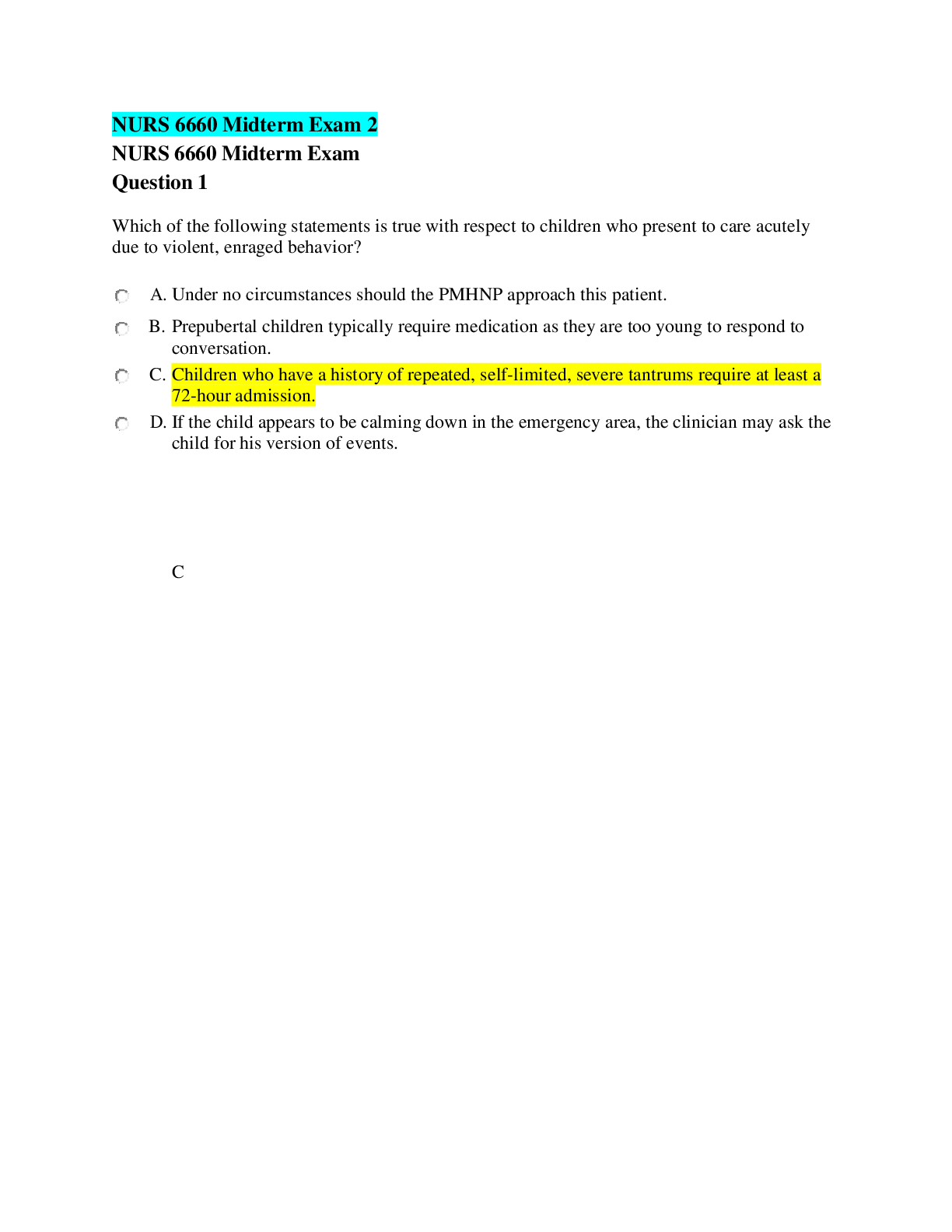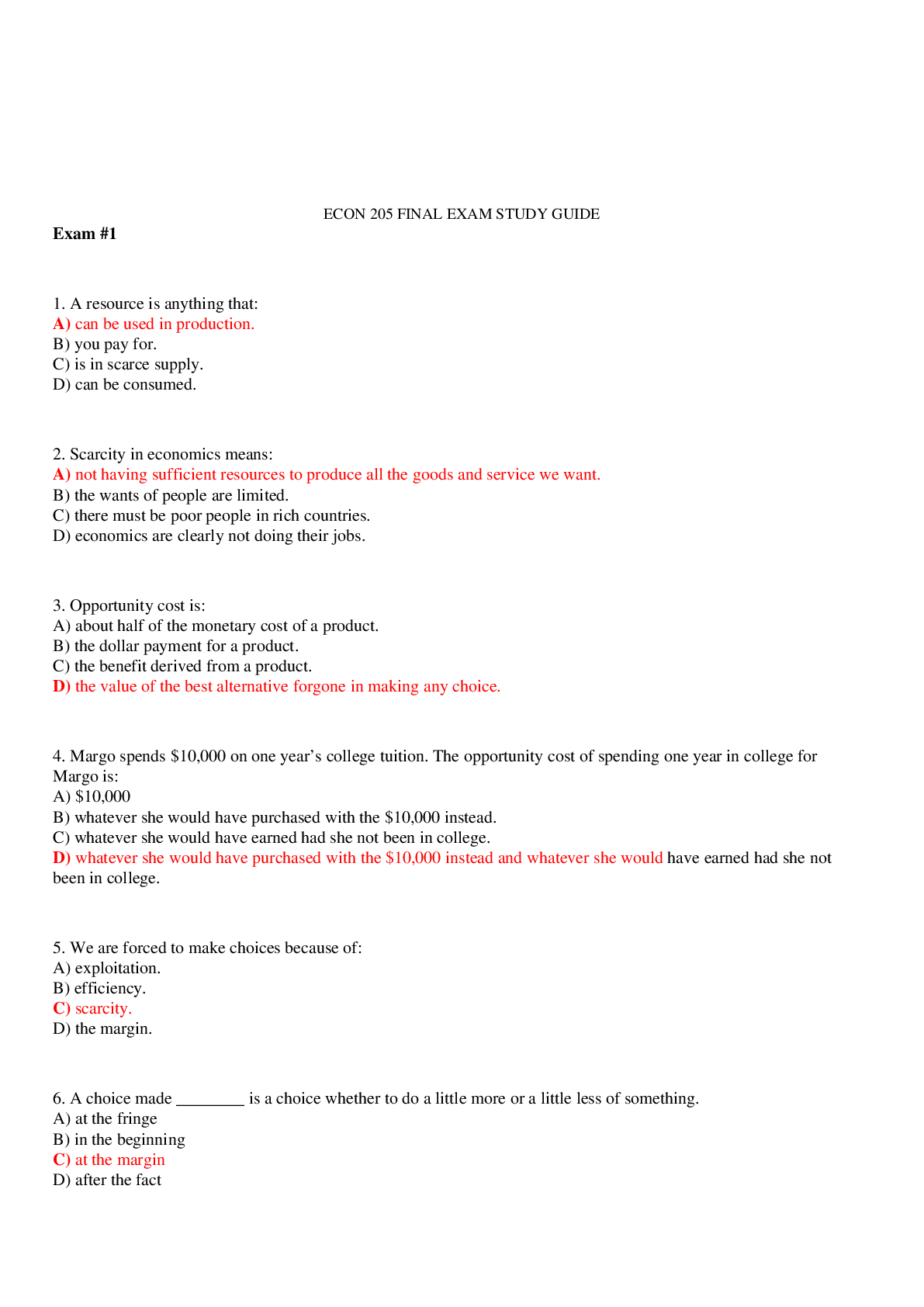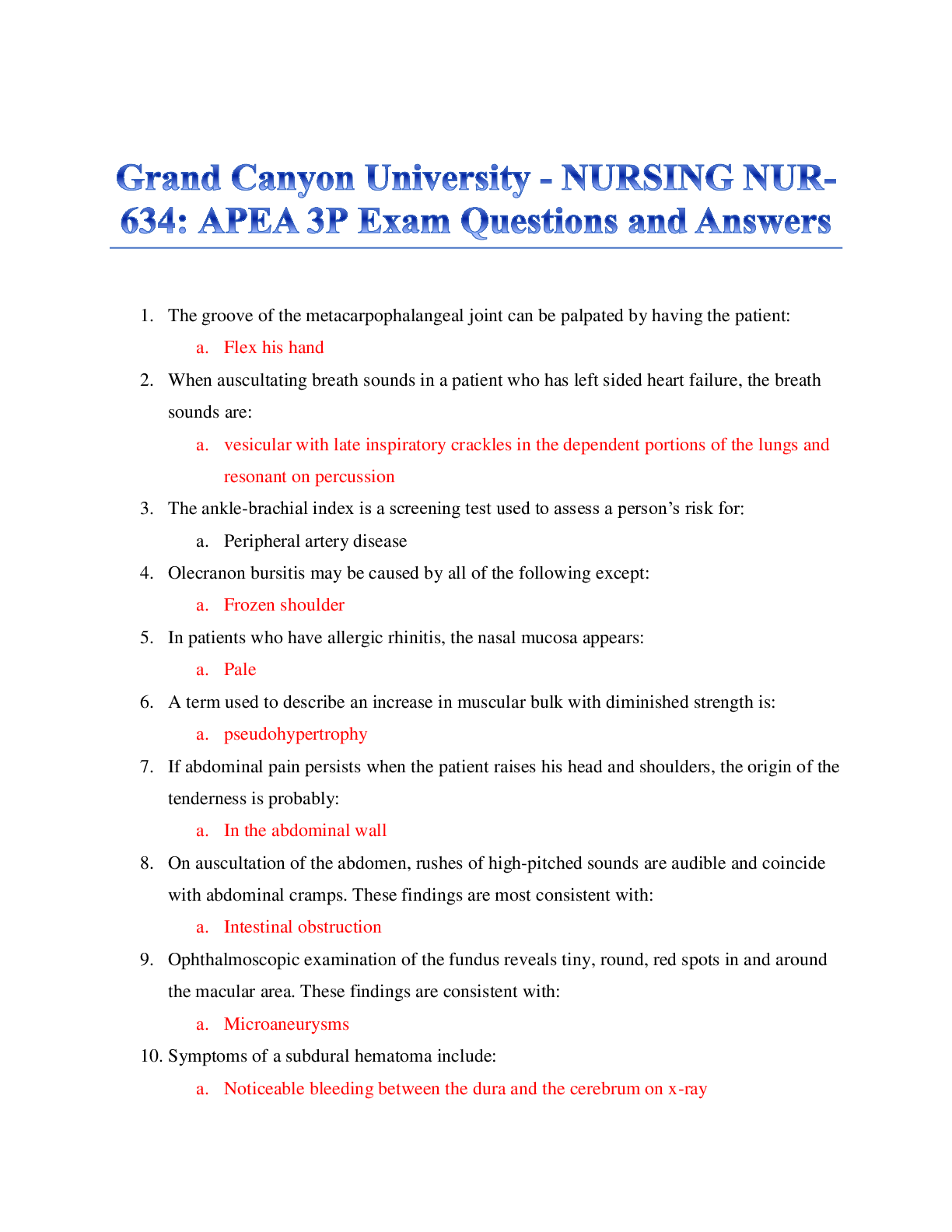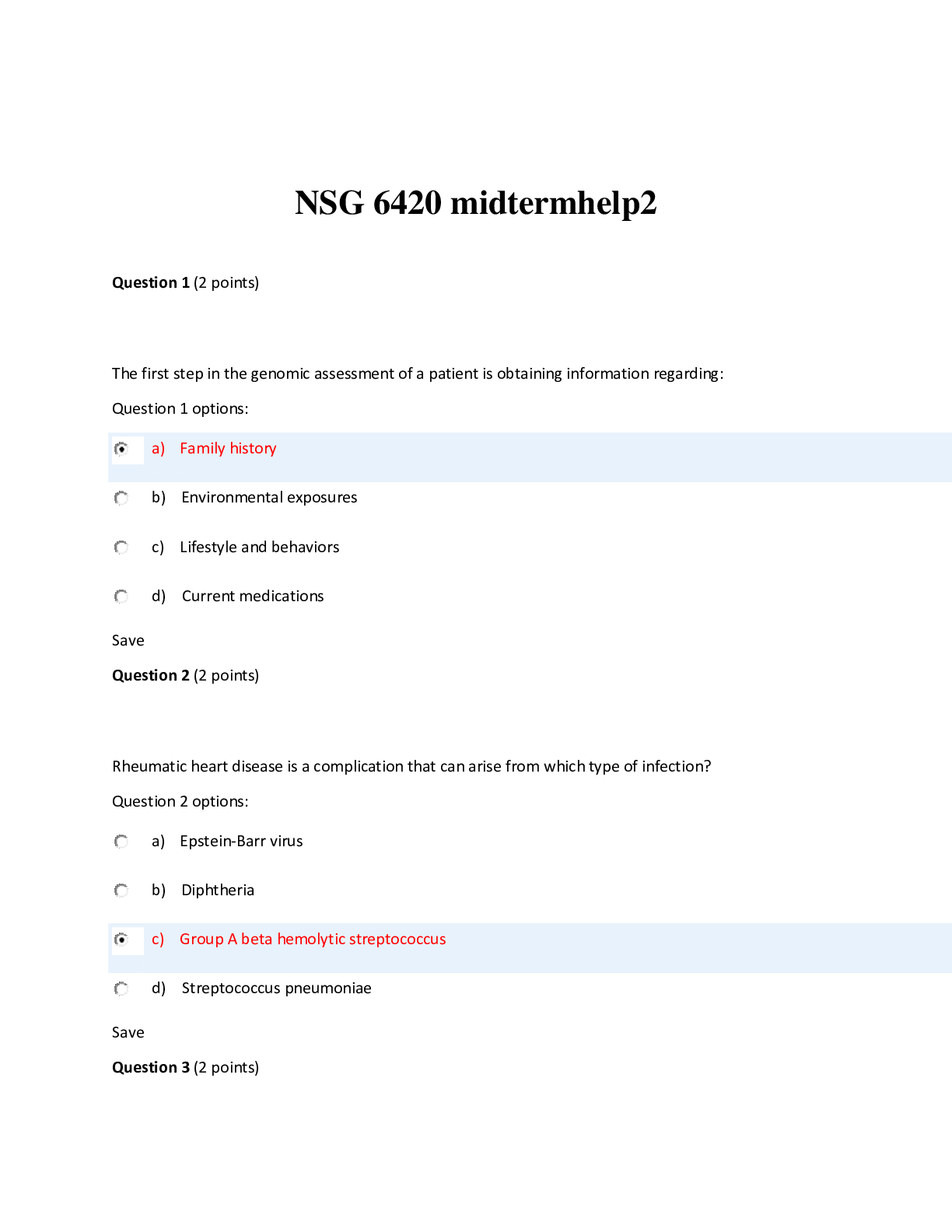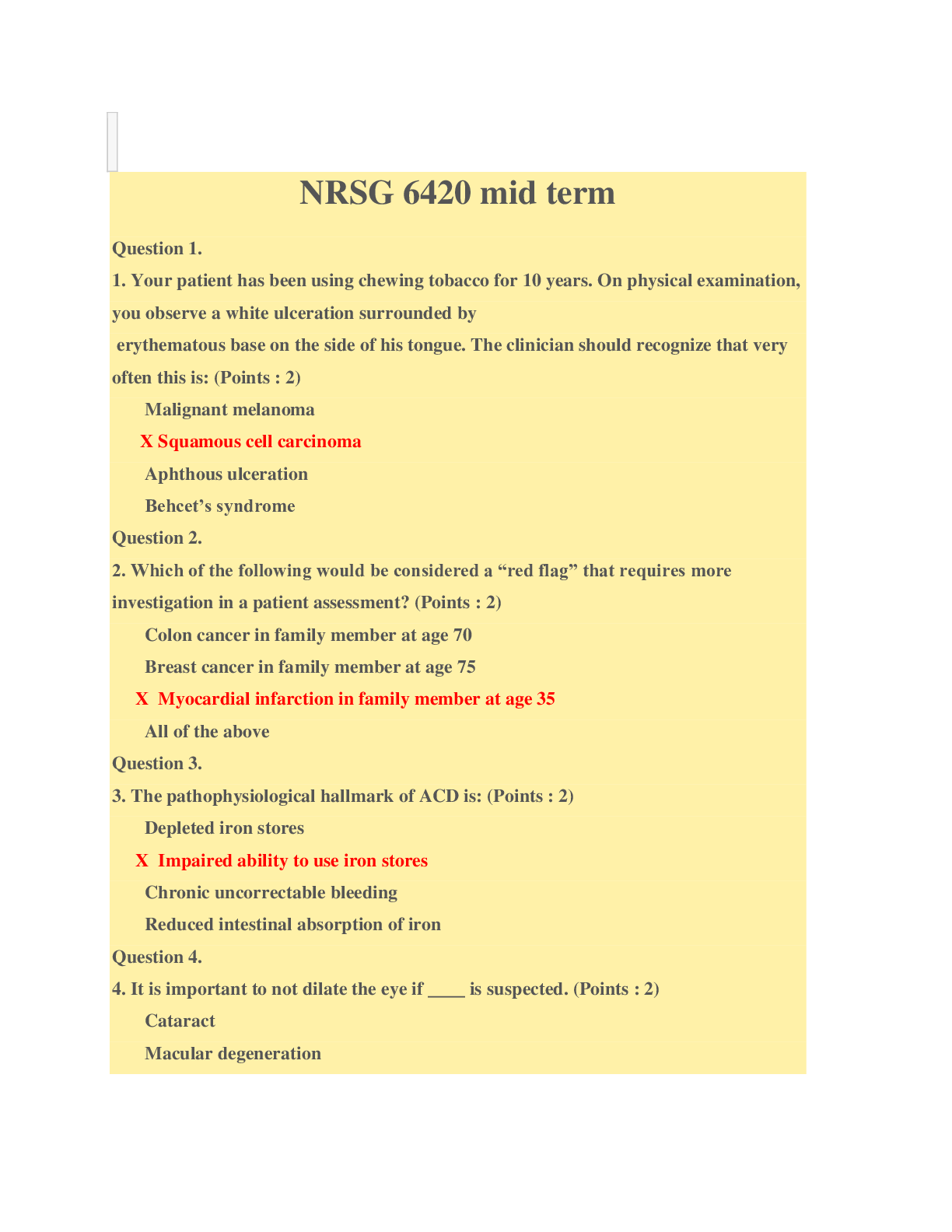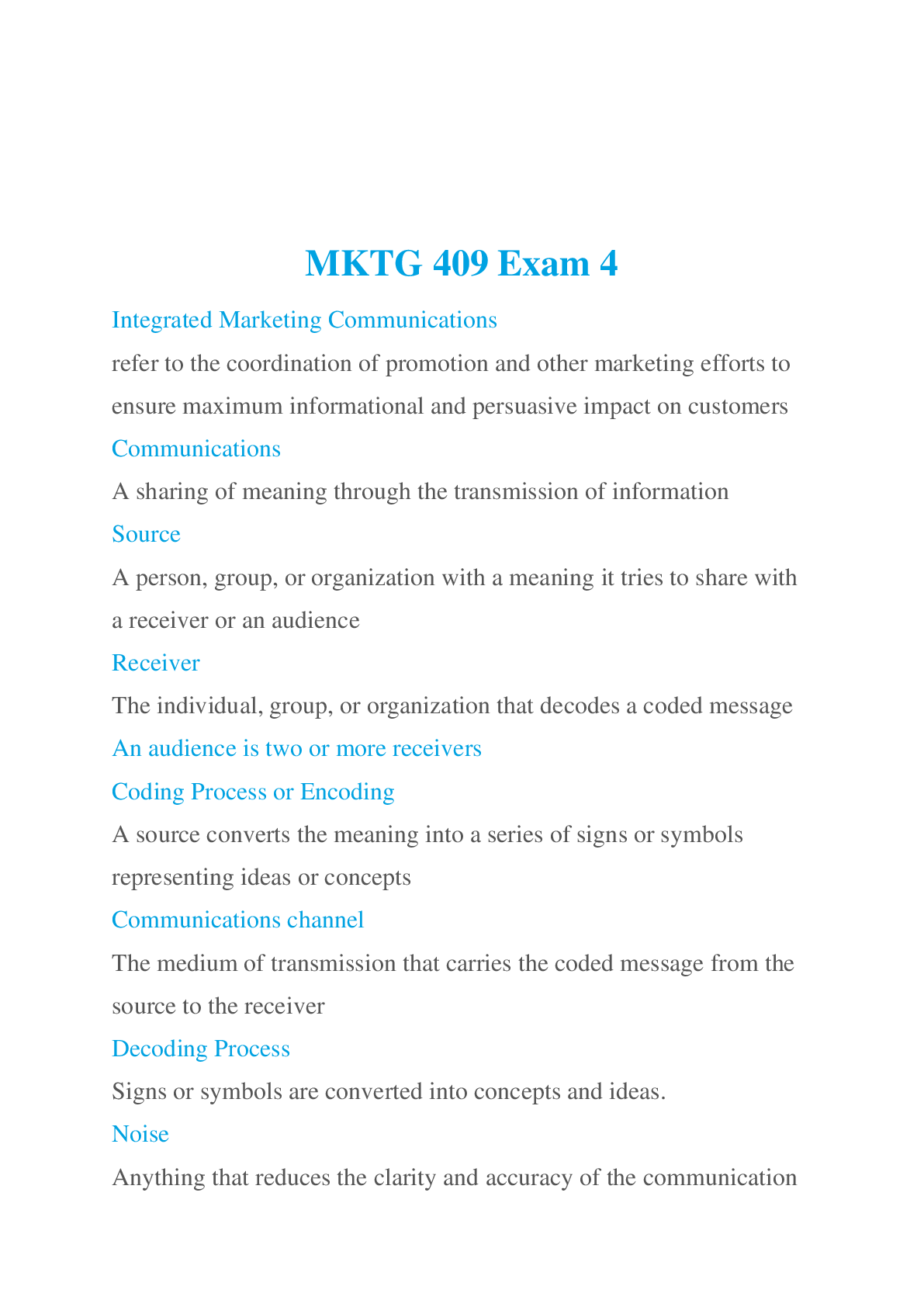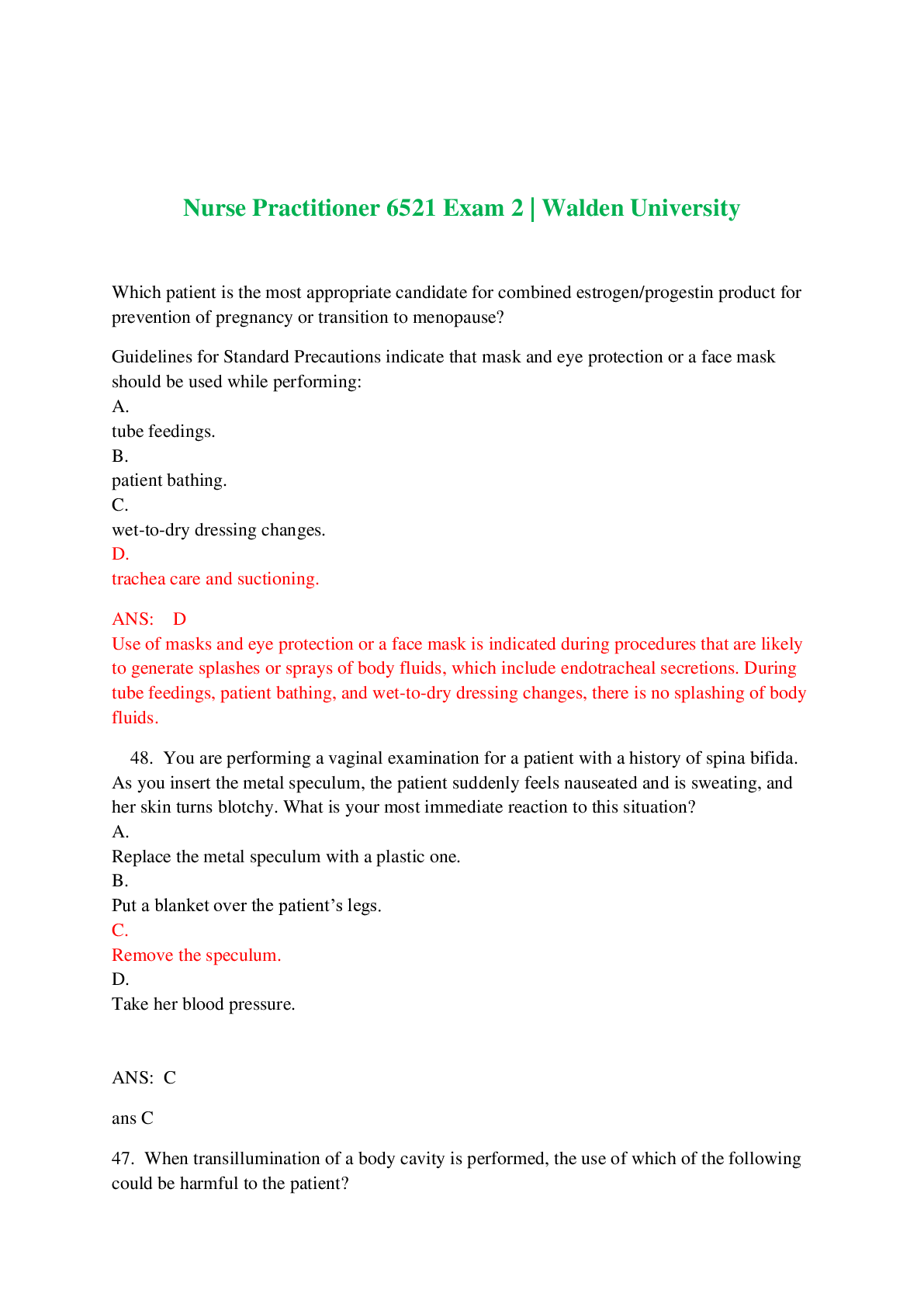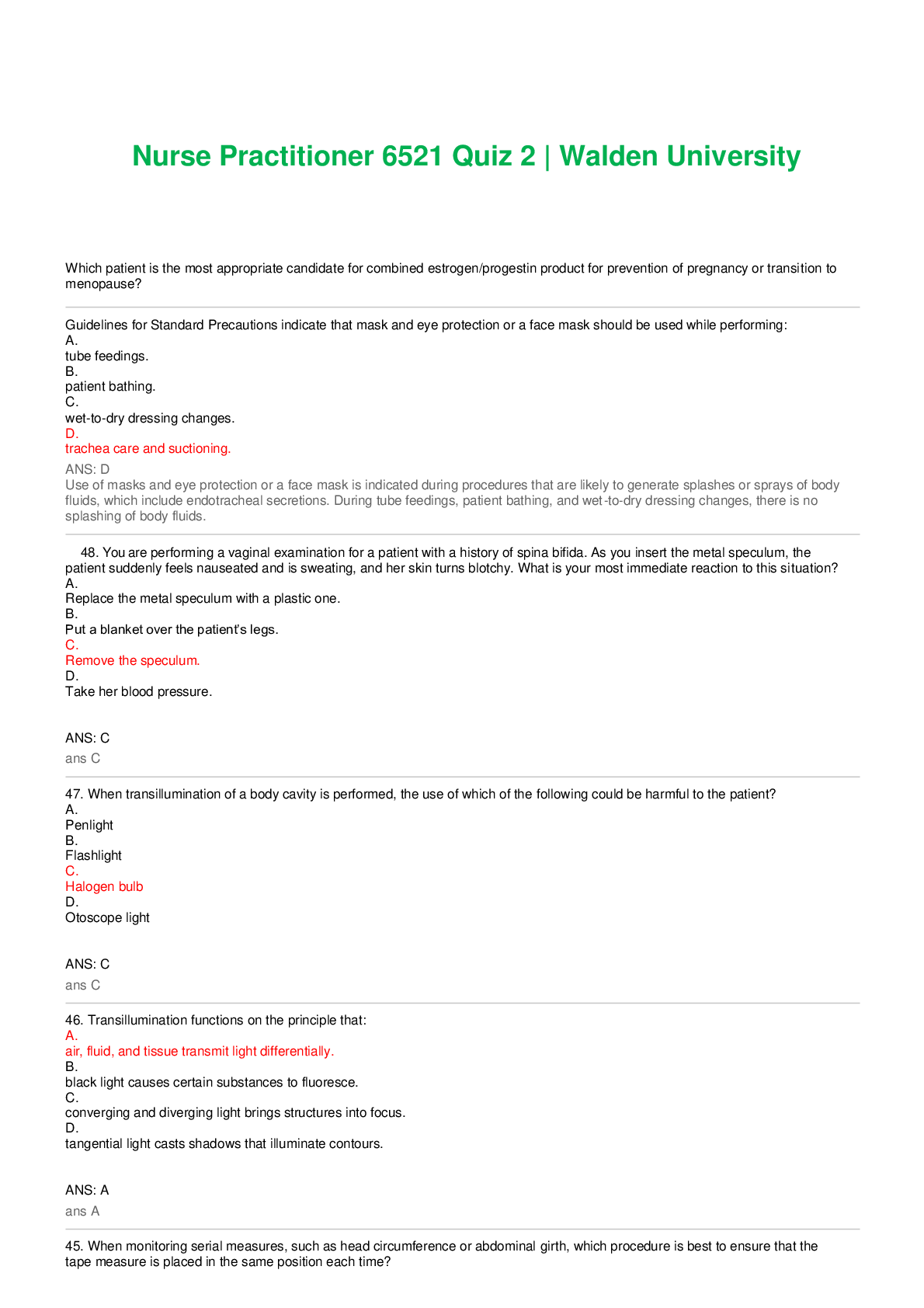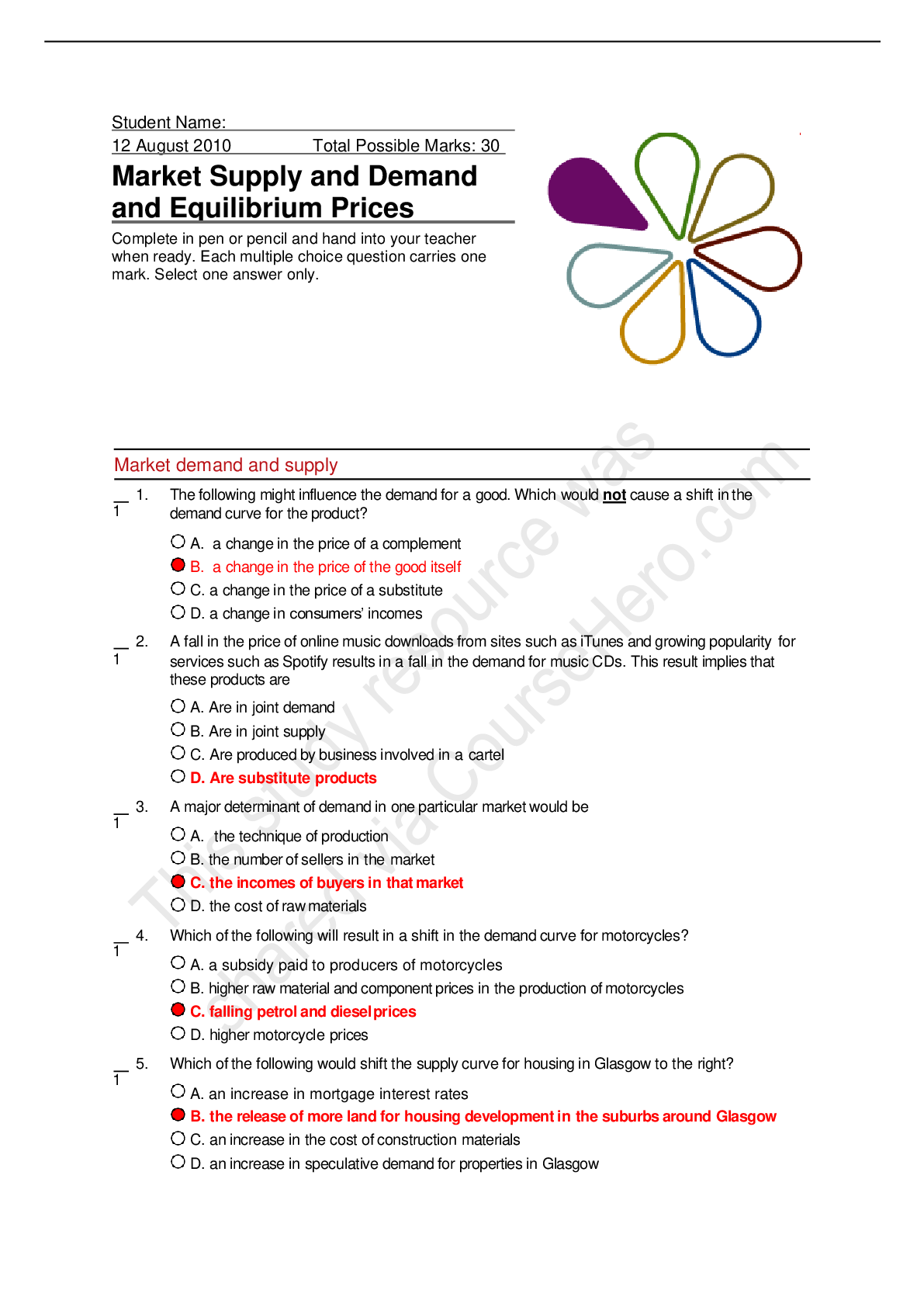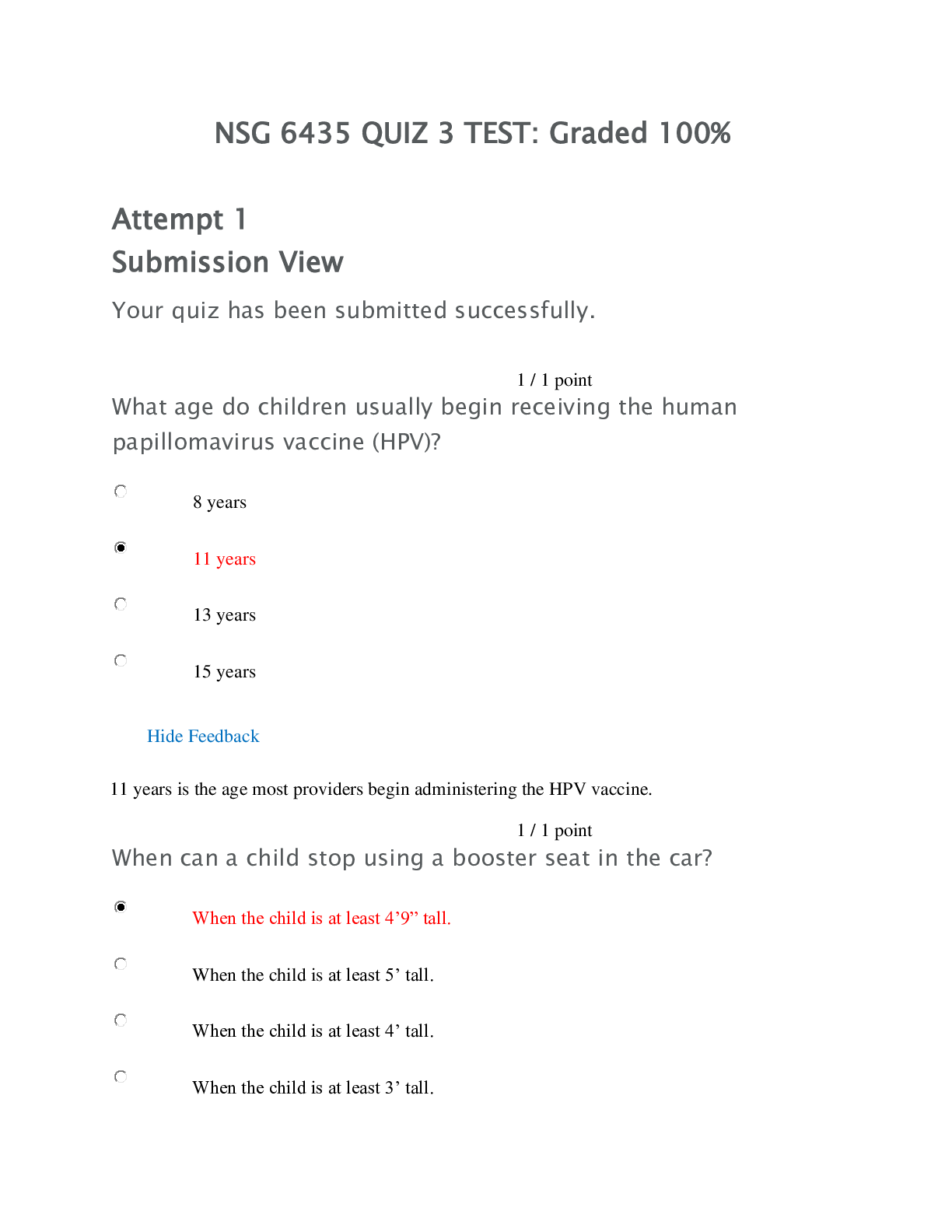Mathematics > EXAM > MATH 221 Week 6 iLab DEVRY,(2019) Statistics for Decision Making. Already Graded A+ (All)
MATH 221 Week 6 iLab DEVRY,(2019) Statistics for Decision Making. Already Graded A+
Document Content and Description Below
MATH 221 Statistics for Decision Making Week 6 iLab Statistical Concepts: • Data Simulation • Confidence Intervals • Normal Probabilities 1. Give and interpret the 95% confidence interv ... al for the hours of sleep a student gets. (5 points) 2. Give and interpret the 99% confidence interval for the hours of sleep a student gets. (5 points) 3. Compare the 95% and 99% confidence intervals for the hours of sleep a student gets. Explain the difference between these intervals and why this difference occurs. (5 points) 4. Give and interpret the 95% confidence intervals for males and females on the HEIGHT variable. Which is wider and why? (7 points) 5. Give and interpret the 99% confidence intervals for males and females on the HEIGHT variable. Which is wider and why? (7 points) 6. Find the mean and standard deviation of the DRIVE variable by using =AVERAGE(A2:A36) and=STDEV(A2:A36). Assuming that this variable is normally distributed, what percentage of data would you predict would be less than 40 miles? This would be based on the calculated probability. Use the formula=NORM.DIST(40, mean, stdev,TRUE). Now determine the percentage of data points in the dataset that fall within this range. To find the actual percentage in the dataset, sort the DRIVE variable and count how many of the data points are less than 40 out of the total 35 data points. That is the actual percentage. How does this compare with your prediction? (10 points) 7. What percentage of data would you predict would be between 40 and 70 and what percentage would you predict would be more than 70 miles? Subtract the probabilities found through =NORM.DIST(70, mean, stdev, TRUE) and =NORM.DIST(40, mean, stdev, TRUE) for the “between” probability. To get the probability of over 70, use the same =NORM.DIST(70, mean, stdev, TRUE) and then subtract the result from 1 to get “more than”. Now determine the percentage of data points in the dataset that fall within this range, using same strategy as above for counting data points in the data set. How do each of these compare with your prediction and why is there a difference? (11 points) [Show More]
Last updated: 3 years ago
Preview 1 out of 4 pages

Buy this document to get the full access instantly
Instant Download Access after purchase
Buy NowInstant download
We Accept:

Reviews( 0 )
$5.00
Can't find what you want? Try our AI powered Search
Document information
Connected school, study & course
About the document
Uploaded On
Sep 25, 2019
Number of pages
4
Written in
All
Additional information
This document has been written for:
Uploaded
Sep 25, 2019
Downloads
0
Views
210



